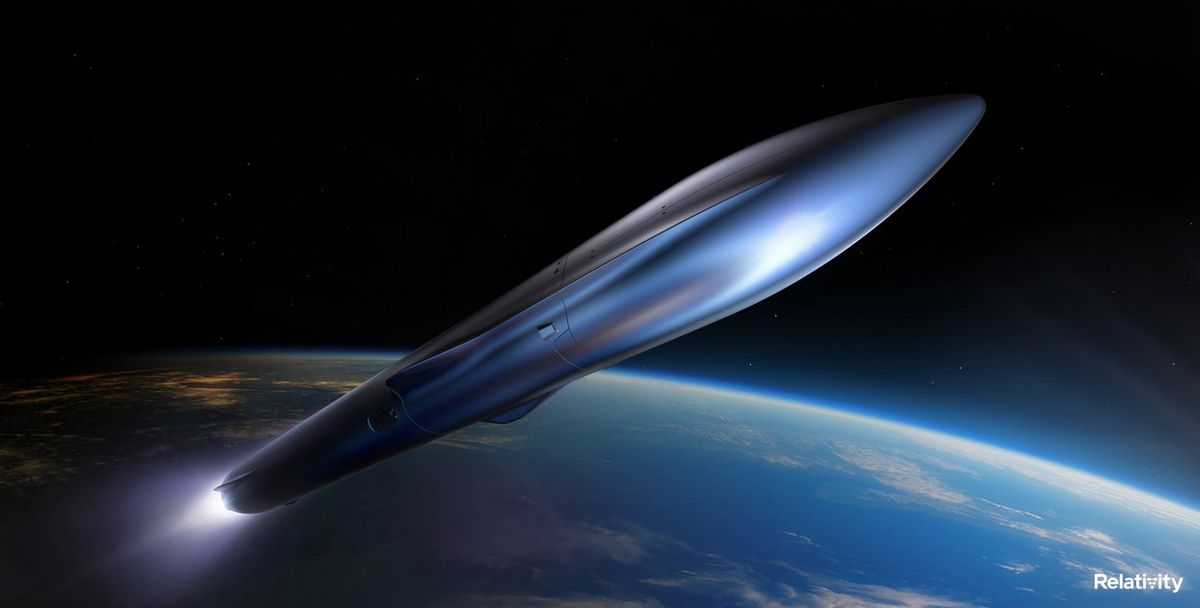The era of just tossing rockets willy nilly into space and then littering orbit, the ocean, and the occasional backyard with their remains may finally be drawing to a close. This week, Relativity Space is announcing the Terran R, a 65 meter tall entirely 3D-printed two stage launch vehicle capable of delivering 20,000 kg into low Earth orbit and then returning all of its bits and pieces safely back to the ground to be launched all over again.
Relativity Space’s special sauce is that they 3D print as close to absolutely everything as they possibly can, reducing the part count of their rockets by several orders of magnitude. While traditional rocket engines may contain thousands of parts, Relativity’s Aeon engine is composed of just three direct metal laser sintered components. This makes the engines faster and cheaper to build and far easier to assemble, which Relativity hopes will let them rapidly scale. And even though their current(ish) generation expendable launch vehicle, the Terran 1, has yet to fly (it will likely do so this year), Relativity is already thinking much, much bigger with the Terran R.
As you might expect from a system with a target launch date of 2024, the technical details on the Terran R are a bit sparse. In particular, we wanted to know exactly how Relativity plans on achieving full reusability with this design, since they’ll need to recover the first stage, the second stage, and the payload fairing, which (traditionally) is four separate bits of spacecraft that would have to be recovered separately. But the Terran R will streamline this process, both figuratively and literally.
The figurative streamlining is achieved by keeping the fairings attached to the second stage, rather than jettisoning them into space, in a setup that I am 100% sure was inspired by the James Bond film You Only Live Twice. This means that the fairings don’t have to be recovered separately, but instead can return to Earth along with the second stage, reducing the bits of spacecraft that you have to recover from four to two.
“We are going to take an iterative approach to recovery—pushing our capability with each flight to learn and then modify our vehicle and software appropriately,” Zach Dunn, Relativity’s SVP of Engineering and Manufacturing told Spectrum in an email. “We'll do this with both the first and second stages. Initially we are planning on down range landing at sea, but we'll also be working to get back to land. And our initial intent is that both stages will land propulsively.”
The literal streamlining you can see in the video and renderings of the rocket, with its fluid lines and what look like wings on both the first and second stage. “These are aerodynamic surfaces to help stabilize the stages during reentry,” Dunn says. “For the second stage specifically, they aid in distributing the heat and aero loading over the full side of the stage. This distribution of load coupled with the use of exotic alloys for the second stage will enable reentry and recovery.”
Relativity expects that the Terran R will launch from Launch Complex 16 at Cape Canaveral in 2024.
Evan Ackerman is a senior editor at IEEE Spectrum. Since 2007, he has written over 6,000 articles on robotics and technology. He has a degree in Martian geology and is excellent at playing bagpipes.



